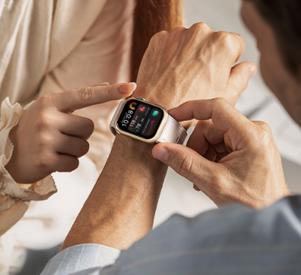
Blood pressure readings can fluctuate significantly throughout the day due to various factors. Understanding these fluctuations is crucial for managing health effectively, especially for individuals monitoring conditions like hypertension. This guide explores the key elements that influence blood pressure readings, practical tips for achieving accurate measurements, and how advanced technology, like the HUAWEI WATCH D2, supports blood pressure monitoring. This article delves into the various influences on blood pressure readings, practical methods for accurate measurement, and how technology can play a role in better health management.
Key Factors That Influence Blood Pressure Readings
Blood pressure readings are influenced by physiological, environmental, and lifestyle factors. These fluctuations provide valuable insights into cardiovascular health and require careful consideration when monitoring.
Time of Day
Blood pressure follows a predictable daily pattern influenced by the circadian rhythm, the body’s internal clock.
Morning vs. Evening Blood Pressure: Typically, blood pressure is higher in the morning due to hormonal surges like cortisol. Evening readings are often lower as the body prepares for rest.
Biological Circadian Rhythm: The natural rise and fall of blood pressure help maintain bodily functions. Monitoring at consistent times provides more accurate insights into health trends.
The best time to take blood pressure reading is often in the morning before eating or drinking and again in the evening to track trends effectively. The HUAWEI WATCH D2 enhances this understanding by offering 24-hour ambulatory monitoring, allowing users to identify patterns and track fluctuations.
Physical Activity and Exercise
Exercise is a critical factor in blood pressure management, affecting both short- and long-term readings.
Effects of Exercise on Blood Pressure: While activity temporarily raises blood pressure, regular exercise can lower resting levels over time.
Timing and Intensity of Physical Activity: Light morning activities may help regulate the natural surge, while intense workouts in the evening could affect sleep and blood pressure levels.
The HUAWEI WATCH D2 supports this with real-time tracking during workouts and detailed reports that highlight trends and responses.

Stress and Emotional State
Stress, whether acute or chronic, has a significant impact on blood pressure.
Impact of Acute and Chronic Stress: Temporary stress can spike readings, while ongoing stress contributes to long-term hypertension risks.
Managing Stress for Better Readings: Techniques like mindfulness, exercise, and relaxation can lower stress-related spikes.
With its stress-monitoring feature, the HUAWEI WATCH D2 helps users identify stress patterns and incorporate relaxation techniques effectively.
Diet and Nutrition
What you eat directly impacts your blood pressure.
High Salt Intake and Blood Pressure: Excess sodium increases fluid retention, raising blood pressure.
Foods That Help Lower Blood Pressure: Potassium-rich foods, whole grains, and lean proteins help stabilize levels.
The HUAWEI WATCH D2 offers tools to log dietary habits and monitor their impact on health indicators.
Medication and Health Conditions
Medications and underlying health conditions also influence readings.
Impact of Medication on Blood Pressure: Some drugs may lower or raise readings as a side effect.
How Chronic Conditions Like Hypertension Affect Readings: Conditions like diabetes or kidney disease can complicate blood pressure management.
The HUAWEI WATCH D2 provides consistent tracking and alerts for significant changes, aiding in medication and condition management.
How to Get Accurate Blood Pressure Readings
Consistency and technique are key to obtaining reliable blood pressure measurements. Small errors can lead to misleading results, complicating health management.
Preparing for Accurate Measurement
Preparation ensures reliable readings.
Best Time of Day for Measurement: Measure blood pressure in the morning before eating or drinking and in the evening to identify trends.
Proper Positioning and Technique: Sit comfortably with feet flat on the ground, back supported, and arm resting at heart level.
The HUAWEI WATCH D2 simplifies this process with user-friendly instructions and automated tracking.
Avoiding Common Mistakes When Measuring Blood Pressure
Avoiding common pitfalls improves the accuracy of readings.
Wrong Cuff Size and Its Impact: Incorrect cuff size skews results; use the appropriate size for precise measurements.
How to Avoid External Factors That Skew Results: Avoid caffeine, smoking, or stress-inducing activities before measurements.
The HUAWEI WATCH D2 minimizes these issues with its precise TruSense system and adaptive features.
Conclusion
Understanding the factors influencing blood pressure readings empowers individuals to take control of their health. Elements like time of day, activity levels, diet, stress, and medical conditions all play a role in fluctuations. Accurate monitoring is essential, and tools like the HUAWEI WATCH D2 make it easier than ever to track trends and maintain optimal health. With features like 24-hour monitoring, intuitive reporting, and stress management, the HUAWEI WATCH D2 serves as a reliable companion in managing blood pressure. Embrace technology to gain deeper insights and take proactive steps toward a healthier, balanced lifestyle.